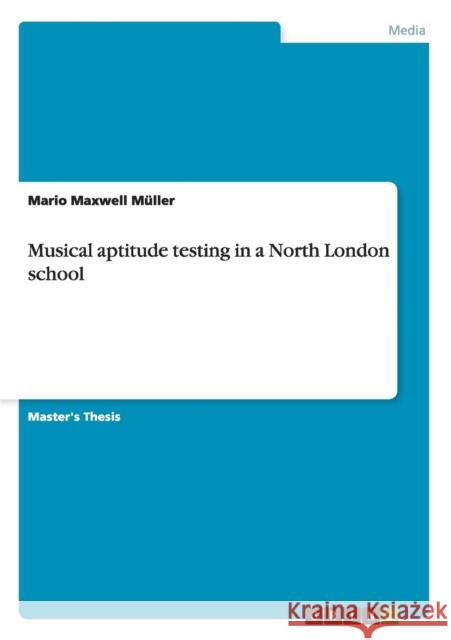Musical aptitude testing in a North London school » książka
Musical aptitude testing in a North London school
ISBN-13: 9783656655114 / Angielski / Miękka / 2014 / 112 str.
Master's Thesis from the year 2011 in the subject Musicology, grade: Distinction, course: Masters in Music (Music Education) with distinction, language: English, abstract: Well-known musical aptitude tests designed by, among others, Seashore, Gordon, Bentley and Wing have been extensively discussed by several researchers, and this background is provided in this mini-dissertation. However, this research project was aimed at determining to what extent a newly designed music listening test impacts on students‟ success rate in being judged to have particular musical aptitude. The purpose of this research was to evaluate what students score respectively for four elements of music (pitch, melody, rhythm and texture) through a musical aptitude test designed by the author in consultation with colleagues in the Music Department at a school in North London in the United Kingdom .These tests were divided into two stages with students aged 10-13, of mixed genders and from different cultural backgrounds. The first focussed on the listening test (questionnaire) for a sample of 160 students. The second stage included practical performances (interviews and observations) and aural tests based on the elements: Rhythm, Melody, Improvisation, Two-part melody and Texture. The results of the first stage revealed that the students particularly achieved high scores for the elements of music: melody and pitch. The age groups who scored the highest marks respectively were pupils aged 13. The results of the second sample of the respondents who completed the test revealed that the majority of the students had previous music tuition with the string instrument being the most popular amongst respondents. This study revealed that students always respond to different sound qualities, followed by the identification of rhythmical patterns and melody. Their memory of pitch changes and develops further due to the possession of precise interval recognition and excellent memory recall.











